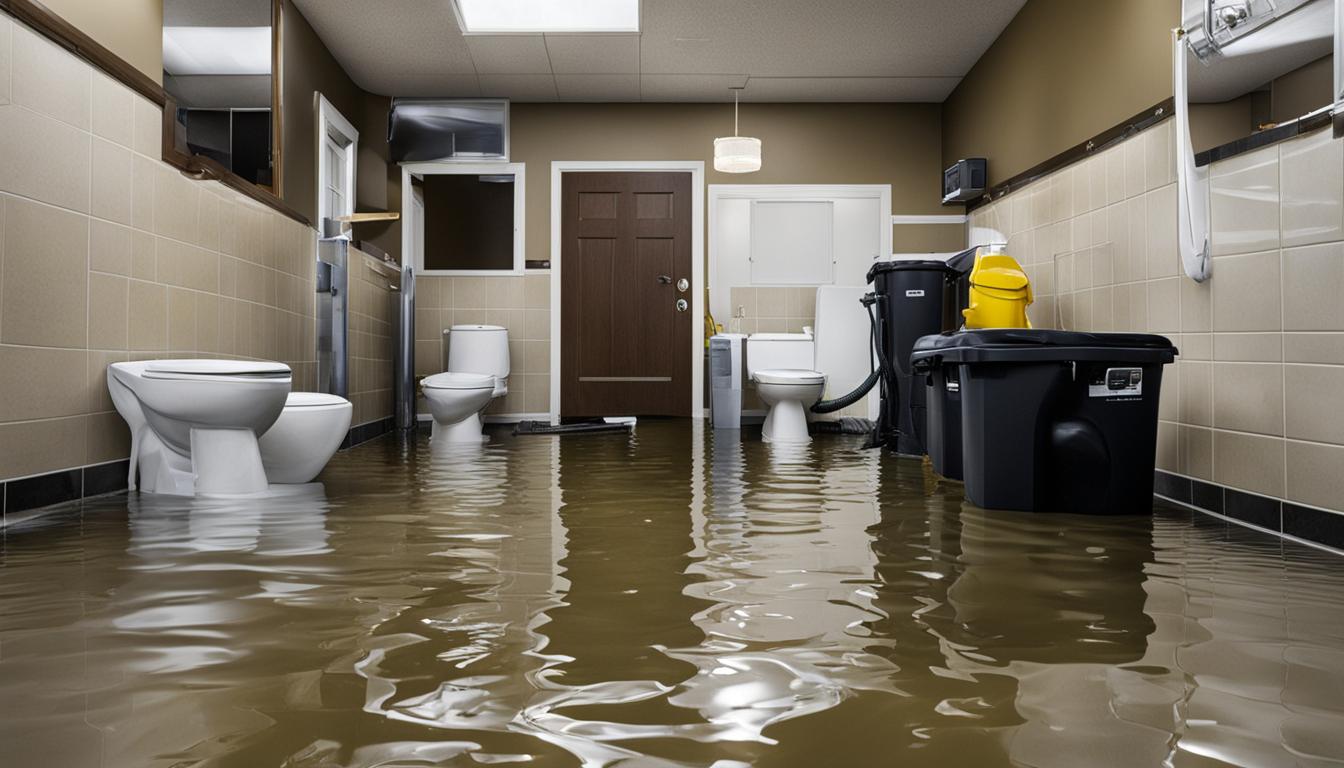Ever faced the sudden and chaotic gush of an overflowing toilet and wondered if there’s a quick fix? You’re not alone. This plumbing emergency can turn any day upside down, causing water damage and hygiene issues if not addressed swiftly.
Fortunately, toilet overflow solutions are often easier than they seem. This guide provides step-by-step clogged toilet fixes using simple, household tools. Whether you’re new to DIY toilet repair or an experienced home handyman, these tips will help you manage and resolve the issue effectively. This way, you can minimize stress and potential damage.
Identify the Cause of Toilet Overflow
When your toilet overflows, knowing why is key to fixing it fast. Most overflows come from clogs or blockages. Finding out what’s causing the problem is the first step.
Several things can cause toilet clogs:
- Too much toilet paper: Using too much can block the drain and cause overflows.
- Foreign objects: Things like sanitary products, toys, or wipes can get stuck in the pipes.
- Float mechanism problems: If the float in the tank doesn’t work right, water keeps flowing and can overflow.
To figure out what’s wrong, start by checking the tank. Make sure the float works correctly. If it’s a clog, think about what you might have flushed or what’s causing the blockage.
Knowing the main reasons for toilet overflows helps you find the right fix. This way, you can tackle the problem effectively.
Turn Off the Water Supply
To stop water damage from a toilet overflow, you must act fast. First, find and turn off the shut off toilet valve. This valve is near the toilet’s base.
Here’s how to quickly shut off the toilet water:
- Find the shut off toilet valve. It’s a small, round handle where the water line meets the wall.
- Turn the valve clockwise to stop the water flow. Make sure it’s fully turned to stop any remaining flow.
If the valve is stuck or not working, use the main water shutoff valve. This will cut off water to the whole house, stopping the overflow.
Quickly shutting off the toilet water helps prevent damage. It also lets you find and fix the problem more easily.
Use a Plunger to Clear the Blockage
Dealing with a clogged toilet can be a challenge. But, knowing how to use a plunger can make a big difference. A flange plunger is the best choice for toilets. It has an extended rubber flap that fits well into the drain, creating a tight seal.
Before you start, make sure to take safety steps. Wear gloves to protect yourself from harmful bacteria. Also, have towels or newspapers ready to catch any spills and keep the area clean.
To fix the toilet with a plunger, follow these steps:
- Put the flange of the plunger into the toilet bowl, making sure it covers the drain.
- Submerge the plunger in water to seal it, as air alone won’t be enough to clear the clog.
- Start by pushing down gently, then apply more force while keeping the seal tight.
- Keep plunging steadily. If the clog is gone, you’ll see the water start to drain.
- Flush the toilet to check if the clog is fully cleared. If not, repeat the process until it is.
Learning how to use a plunger correctly makes fixing clogs easy. Remember, it might take a few tries to clear a stubborn clog. If plunging doesn’t work, you may need to try other methods, which we’ll cover next.
How to fix a toilet that is overflowing?
Regular maintenance is key to preventing future toilet overflows. Homeowners should consider several toilet maintenance tips. Routine plumbing checks can spot issues before they get worse.
One of the most effective ways to maintain a smoothly functioning toilet is by observing proper flushing habits. Avoid flushing items that can cause blockages, such as sanitary products, wipes, and excessive amounts of toilet paper. Instead, dispose of these items in the trash to minimize the risk of clogs and overflows.
Additionally, monitoring your plumbing system for slow drains can help in early detection of potential issues. A slow-draining toilet might be a sign of an impending blockage, and addressing it promptly can prevent future toilet overflows. Homeowners can use natural drain cleaners or seek professional help to clear minor blockages before they worsen.
Moreover, periodic checks of the toilet’s internal mechanisms can aid in identifying wear and tear that might lead to malfunctions. Ensuring that the fill valve and flapper are functioning properly can prevent leaks and maintain the toilet’s efficiency. These simple steps can significantly reduce the chances of encountering overflow problems.
By following these toilet maintenance tips and incorporating routine plumbing checks into their home care routine, homeowners can effectively prevent future toilet overflows and enjoy a more reliable plumbing system.
Use an Auger for Stubborn Clogs
When plungers don’t work, a toilet auger is key for clearing tough toilet clogs. This tool is made for the toilet’s plumbing system. It can handle the twists and turns.
To use a toilet auger, follow these steps:
- Start by putting the auger’s rubber sleeve in the toilet bowl. This protects it from scratches or damage.
- Push the auger’s cable into the drain until you hit resistance. This means you’ve found the clog.
- Turn the auger’s handle clockwise to break the clog. This helps clear tough toilet clogs and moves the cable smoothly.
- After the clog is gone, pull the cable back by turning the handle counterclockwise. Carefully take it out of the toilet.
- If needed, do it again to make sure the drain is clear.
Knowing how to use a closet auger can save you time and money. It’s a good way to augure a toilet and fix stubborn clogs.
Conclusion
Fixing toilet overflows needs a careful plan. Each step must be done right, as shown in this guide. Finding out why the overflow happened is key. It tells you what tools and methods to use.
Turning off the water supply first helps avoid more damage. It gives you time to think about what to do next.
For small blockages, a plunger works well. It creates the pressure needed to clear the block. But, tough clogs might need an auger. This tool can get deep into the pipes and clear stubborn blockages.
Having the right tools and knowing how to use them makes fixing toilets easier. This increases the chance of a good fix.
Regular checks and cleanings can stop problems before they start. This keeps your toilet working well. Most overflows can be fixed by yourself with the right methods.
But, sometimes you might need a pro for really tough issues. With this guide, you’re ready to tackle toilet problems on your own. Your home will stay free from plumbing troubles.









